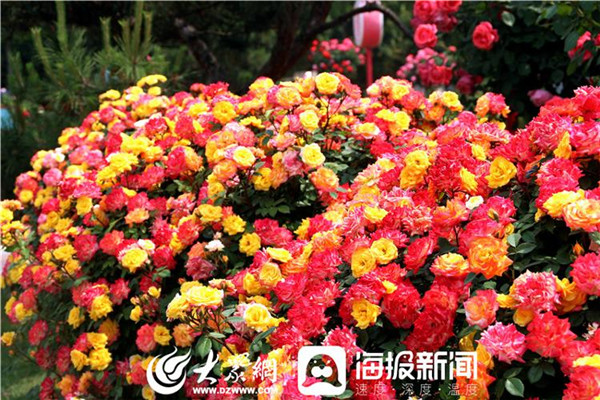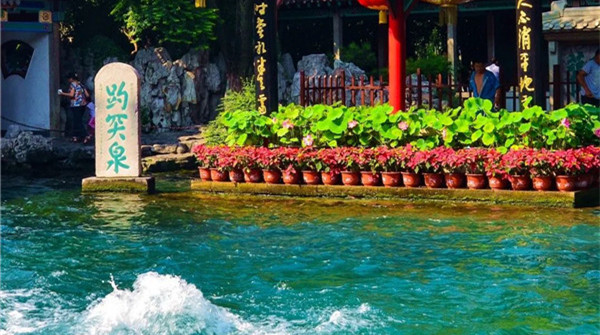Thangka artist enriches community by passing on heritage to youths

Two women admire thangka paintings at an ethnic craft training center in Sichuan province. LIU ZHONGJUN/CHINA NEWS SERVICE
CHENGDU-A Tibetan thangka artist has been promoting the art form as well as unity and harmony in a community of Southwest China's Sichuan province.
Lhamo, 50, comes from Sichuan's Garze Tibetan autonomous prefecture. He is a professional painter of thangka.
Thangka is a Tibetan Buddhist scroll painting on cotton or silk that uses mineral and organic pigments derived from coral, agate, sapphire, pearl, gold and others so that the color stays for centuries. The paintings date back to the 10th century and typically depict Buddhist deities.
In 2006, China listed thangka among its national cultural heritage, a status that has since given the art a major boost. UNESCO listed thangka paintings, murals, patchwork crafts and sculptures as Intangible Cultural Heritage of Humanity in 2009.
Lhamo is a state-level inheritor of a school that teaches thangka painting. Amid the novel coronavirus outbreak, Lhamo is teaching students about thangka online.
In 2004, Lhamo took more than 10 Tibetan students to the Jifu community in the city of Chengdu, the provincial capital. The community is home to more than 30,000 people with more than 1,000 of them belonging to 11 ethnic groups, including Tibetan, Qiang, Hui and Mongolian people.
"The residents were cautious and distant at first," Lhamo said. "They did not quite understand what I wanted to do by taking a group of children there." Locals later found out that Lhamo simply wanted to find a place to teach the students to paint thangka.
Lhamo began learning thangka from his father at the age of 7. As his skills progressed, he wanted to find a professional teacher, but to no avail.
"At that time, I decided that in the future I wanted to become a good teacher myself to pass on the art to the younger generation," he said.
Decades of training turned Lhamo into a seasoned and renowned thangka painter, drawing many students in admiration. Lhamo rarely turned away students and he never charged tuition fees.
Many of his early students were children of poor farmers and herdsmen in the Tibetan areas around Sichuan. Lhamo not only exempted them from tuition fees but also gave them 50 yuan ($7) each as pocket money every week. Lhamo made his money selling his paintings.
Lhamo teaches students of Tibetan and other ethnicities. They are not just interested in painting thangka but also singing and dancing. The Jifu community authorities noticed this and helped them form a group.
For years, Lhamo's group has performed for the community for free. Their performances featured a variety of content, including care for children with autism and anti-cult themes.
In 2013, local authorities lent a 300-square-meter venue to Lhamo for free to help with his teaching. With a bigger venue, more students came. Currently, Lhamo has more than 50 students.
"More students indicate that we can pass on the art to more people," he said.
"Teacher Lhamo and his students have done a lot to enrich the culture and enhance a sense of community here," said community official Li Hanrong. "Helping him is helping ourselves."
Xinhua

 Nishan Forum on World Civilizations
Nishan Forum on World Civilizations Explore magnificent Yellow River culture in Shandong
Explore magnificent Yellow River culture in Shandong

